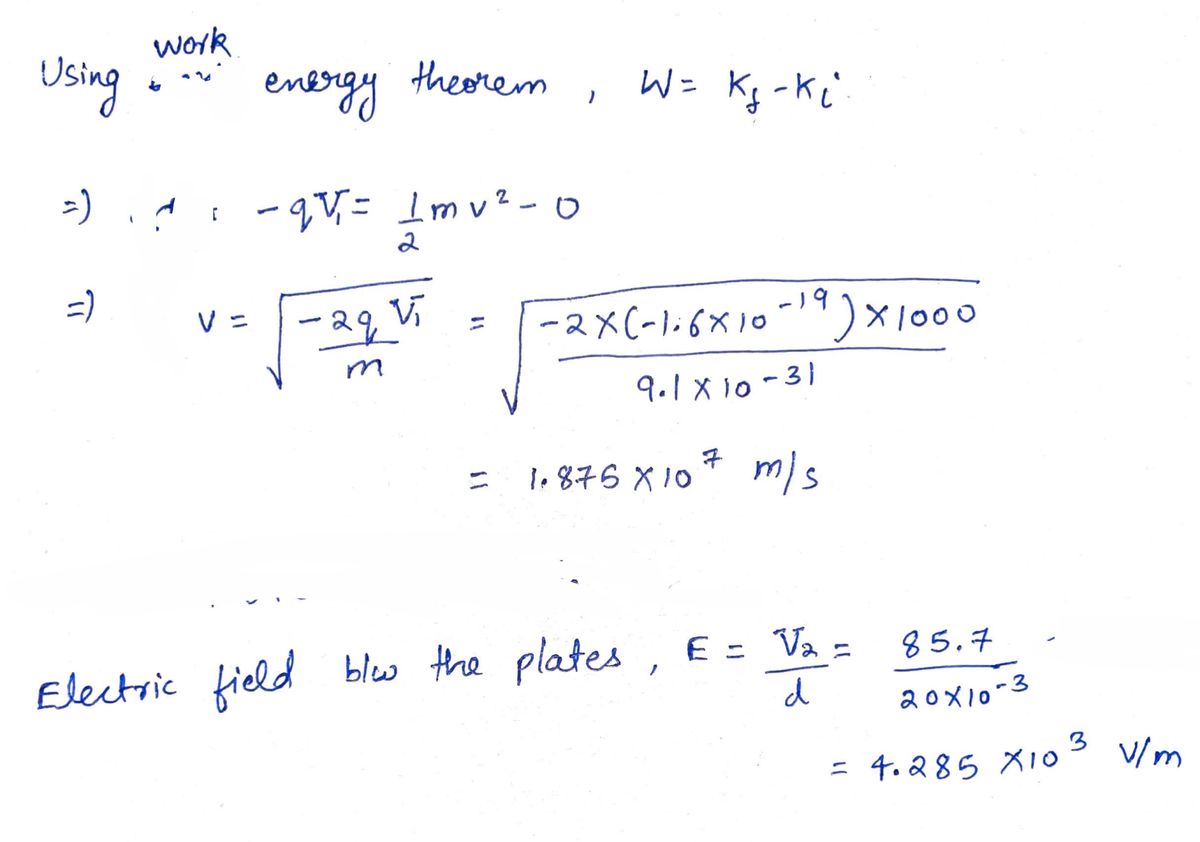For problem 28.9, solve for the magnetic field (in mT) when the accelerating voltage remains 1000 V and the voltage difference between the deflection plates (the "horizontal" par with one above the other in the picture) is 85.7 V. 5 sig. figs.
For problem 28.9, solve for the magnetic field (in mT) when the accelerating voltage remains 1000 V and the voltage difference between the deflection plates (the "horizontal" par with one above the other in the picture) is 85.7 V. 5 sig. figs.
Related questions
Question
For problem 9, solve for the magnetic field (in
mT) when the accelerating voltage remains 1000 V and the voltage difference between the voltage deflection plates (the "horizontal" par with one above the other in the picture) is 85.7 V. (5 sig figs)

Transcribed Image Text:**Figure 28-32 Problem 9:**
In Figure 28-32, an electron is accelerated from rest through a potential difference \( V_1 = 1.00 \, \text{kV} \) and enters the gap between two parallel plates. The separation between the plates is \( d = 20.0 \, \text{mm} \), and there is a potential difference \( V_2 \) across the plates.
**Diagram Explanation:**
- The diagram consists of an electron initially at rest, shown as a red dot.
- It moves along the x-axis, as indicated by the arrow pointing to the right.
- The electron first passes through a region with a potential difference \( V_1 \).
- It then enters a region between two parallel plates with separation \( d \) and potential difference \( V_2 \).
**Chapter 28: Magnetic Fields**
**Problem Context:**
Given \( \vec{B} = (30.0 \, \text{mT}) \hat{\jmath} \), referring to Figure 28-35, determine:
(a) the resulting electric field within the solid, expressed in unit-vector notation.
(b) the potential difference across the solid.

Transcribed Image Text:**Question 2**
For problem 28.9, solve for the magnetic field (in mT) when the accelerating voltage remains 1000 V and the voltage difference between the deflection plates (the "horizontal" pair with one above the other in the picture) is 85.7 V. Use 5 significant figures.
Expert Solution
Step 1

Step by step
Solved in 2 steps with 2 images
